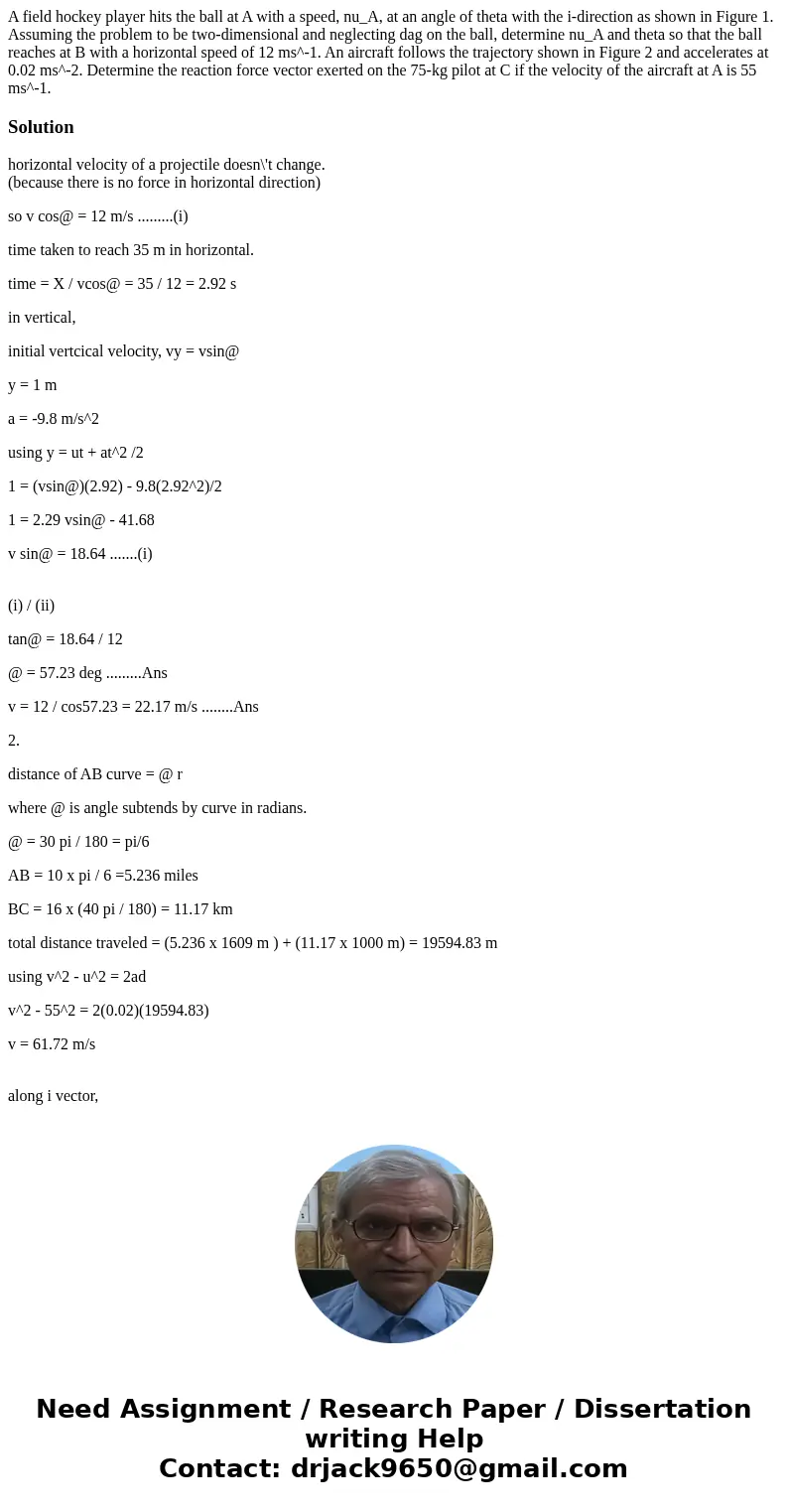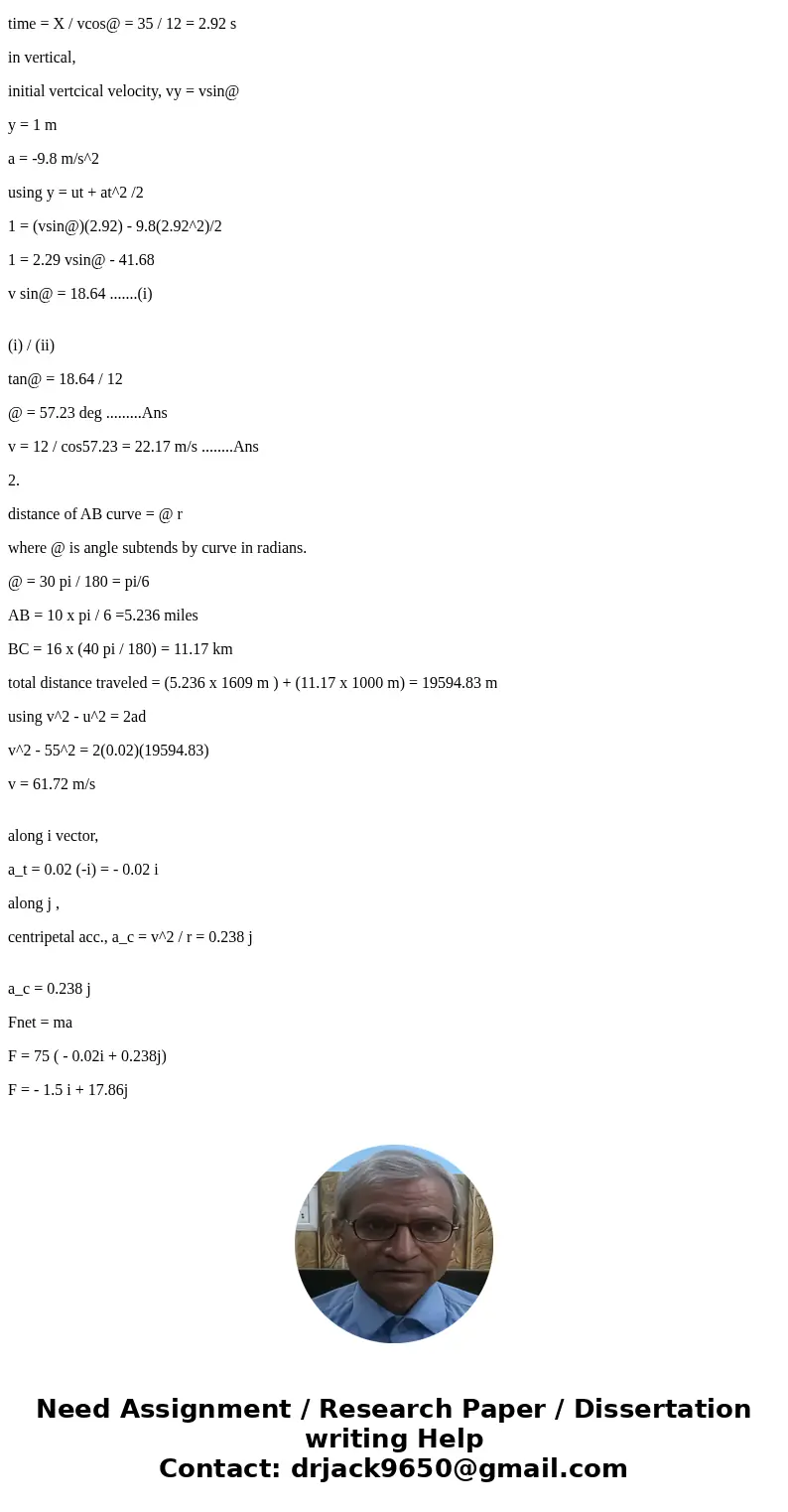A field hockey player hits the ball at A with a speed nuA at
Solution
horizontal velocity of a projectile doesn\'t change.
(because there is no force in horizontal direction)
so v cos@ = 12 m/s .........(i)
time taken to reach 35 m in horizontal.
time = X / vcos@ = 35 / 12 = 2.92 s
in vertical,
initial vertcical velocity, vy = vsin@
y = 1 m
a = -9.8 m/s^2
using y = ut + at^2 /2
1 = (vsin@)(2.92) - 9.8(2.92^2)/2
1 = 2.29 vsin@ - 41.68
v sin@ = 18.64 .......(i)
(i) / (ii)
tan@ = 18.64 / 12
@ = 57.23 deg .........Ans
v = 12 / cos57.23 = 22.17 m/s ........Ans
2.
distance of AB curve = @ r
where @ is angle subtends by curve in radians.
@ = 30 pi / 180 = pi/6
AB = 10 x pi / 6 =5.236 miles
BC = 16 x (40 pi / 180) = 11.17 km
total distance traveled = (5.236 x 1609 m ) + (11.17 x 1000 m) = 19594.83 m
using v^2 - u^2 = 2ad
v^2 - 55^2 = 2(0.02)(19594.83)
v = 61.72 m/s
along i vector,
a_t = 0.02 (-i) = - 0.02 i
along j ,
centripetal acc., a_c = v^2 / r = 0.238 j
a_c = 0.238 j
Fnet = ma
F = 75 ( - 0.02i + 0.238j)
F = - 1.5 i + 17.86j


 Homework Sourse
Homework Sourse